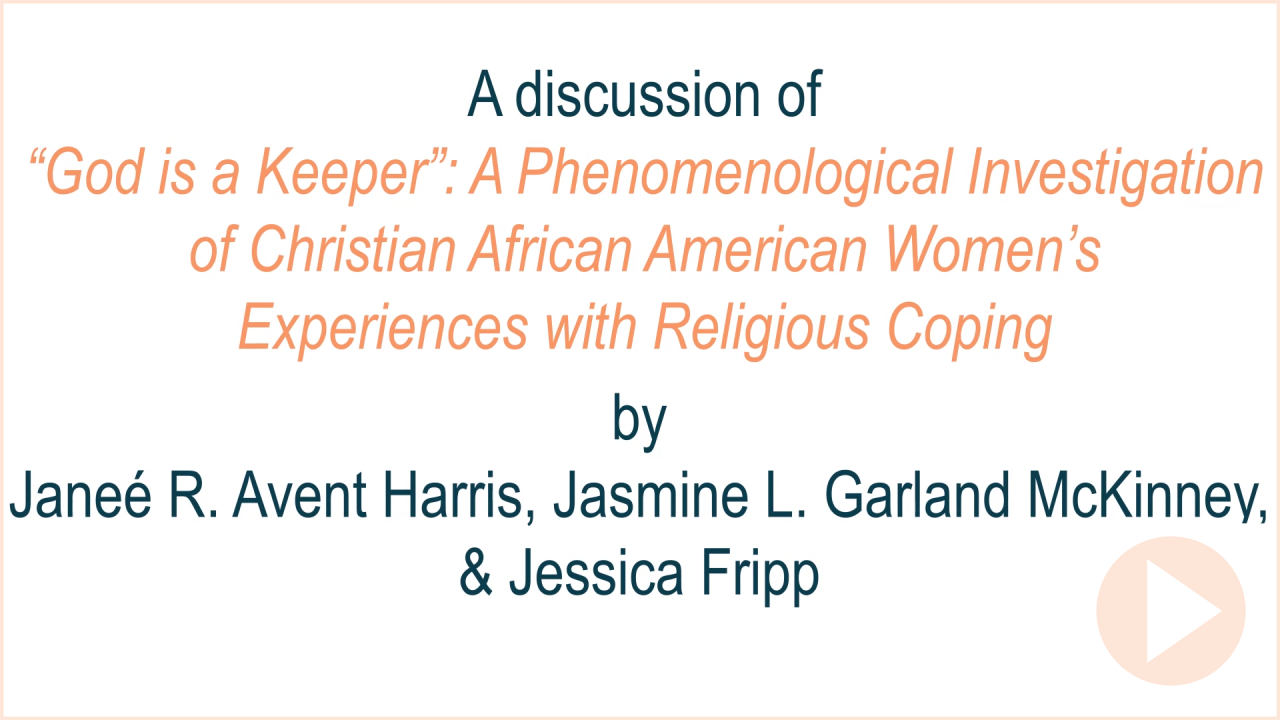“God Is a Keeper”: A Phenomenological Investigation of Christian African American Women’s Experiences With Religious Coping
Janeé R. Avent Harris, Jasmine L. Garland McKinney, Jessica Fripp
Volume 9, Issue 3, Pages 171–184
doi:10.15241/jrah.9.3.171
Article published online: July 2019
Abstract
Full article (PDF)
Full article (HTML)
Author Commentary Video
Children of Incarcerated Parents: Considerations for Professional School Counselors
Jeffrey M. Warren, Gwendolyn L. Coker, Megan L. Collins
Volume 9, Issue 3, Pages 185–199
doi:10.15241/jmw.9.3.185
Article published online: July 2019
School-Based Child Sexual Abuse Prevention: Implications for Professional School Counselors
Rebecca Cowan, Rebekah F. Cole, Laurie Craigen
Volume 9, Issue 3, Pages 200–210
doi:10.15241/rc.9.3.200
Article published online: September 2019
Experiences of Cross-Racial Trust in Mentoring Relationships Between Black Doctoral Counseling Students and White Counselor Educators and Supervisors
Eric M. Brown, Tim Grothaus
Volume 9, Issue 3, Pages 211–225
doi:10.15241/emb.9.3.211
Article published online: September 2019
Further Validation of the Consultation Skills Scale (CSS): Relationships Between Consultation Skills, Supervisory Working Alliance, and Interprofessional Collaboration
Gulsah Kemer, Jeffry Moe, Kaprea F. Johnson, Emily Goodman-Scott, Zahide Sunal, Chi Li
Volume 9, Issue 3, Pages 226–237
doi:10.15241/gk.9.3.226
Article published online: September 2019
A Child Abuse Reporting Framework for Early Career School Counselors
Malti Tuttle, Lacey Ricks, Margie Taylor
Volume 9, Issue 3, Pages 238–251
doi:10.15241/mt.9.3.238
Article published online: September 2019
Interstate Licensure Portability: Logistics and Barriers for Professional Counselors
Anna Elliott, Lynn Bohecker, Gregory M. Elliott, Bethany Jean Townsend, Veronica Johnson, Anna Lopez, Elizabeth D. Horn, Ken Roach
Volume 9, Issue 3, Pages 252–266
doi:10.15241/ae.9.3.252
Article published online: September 2019
